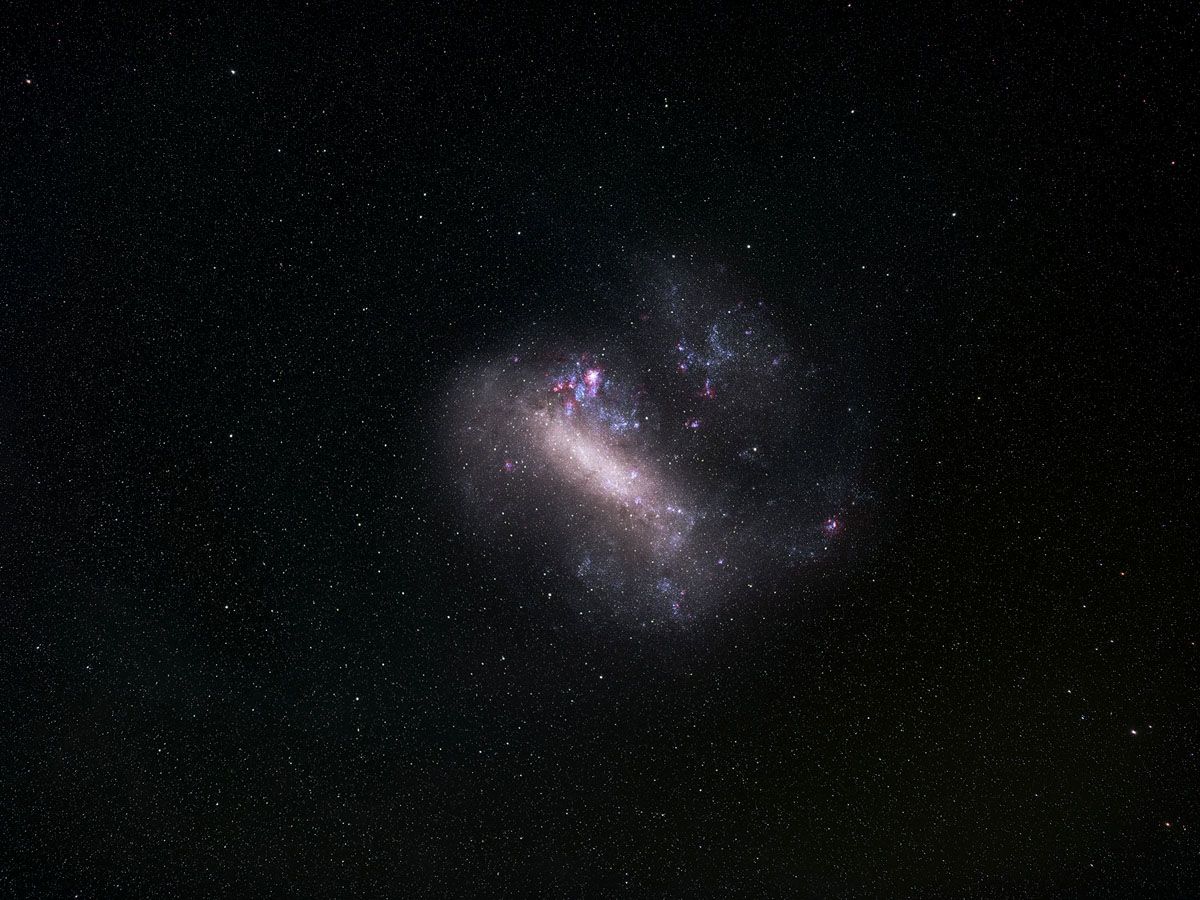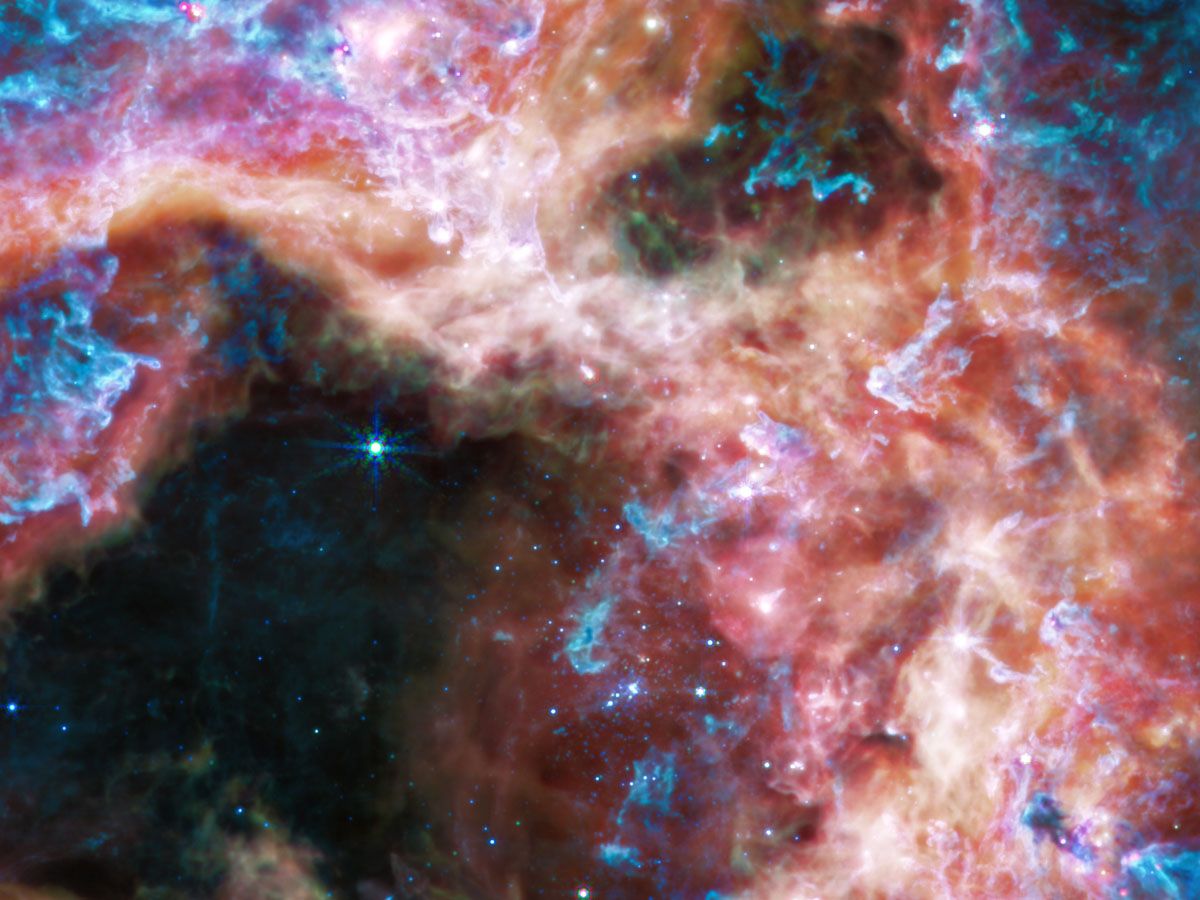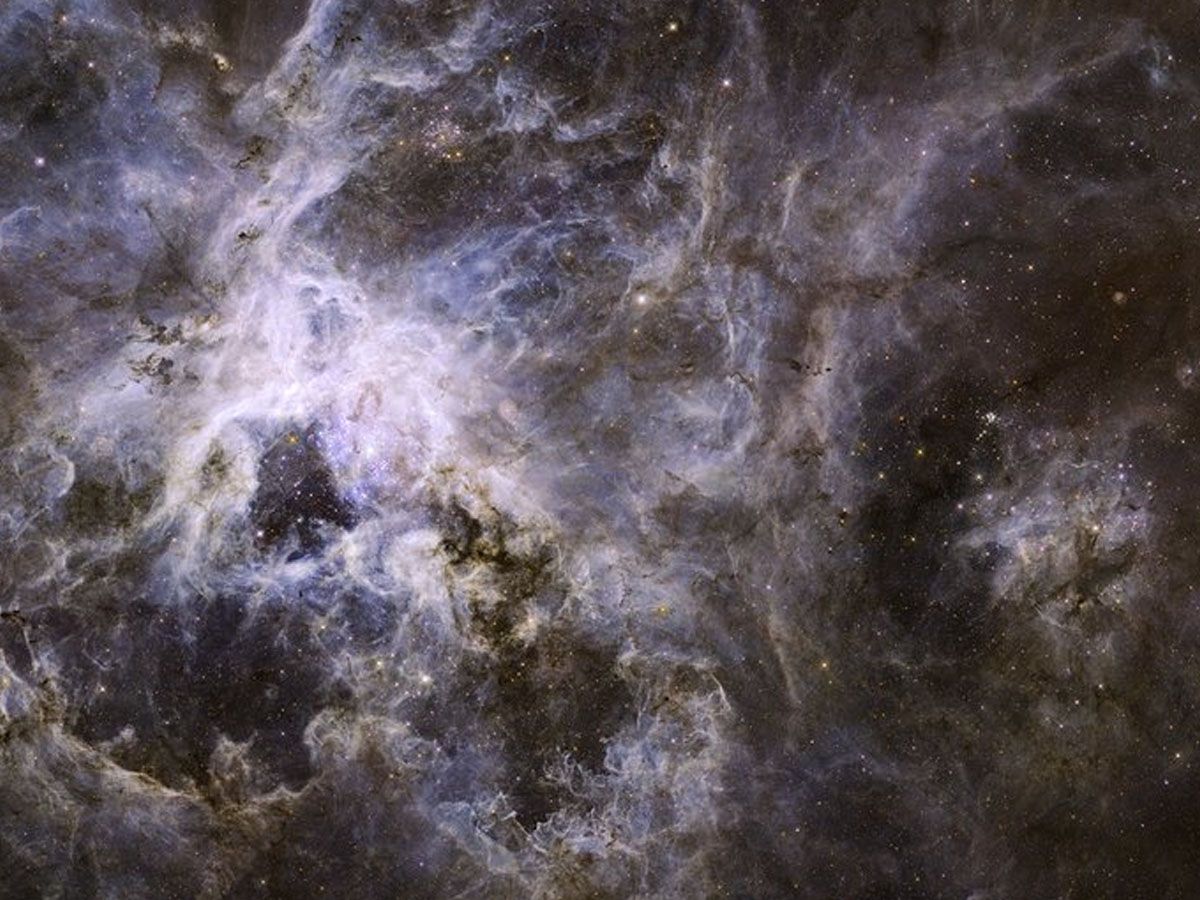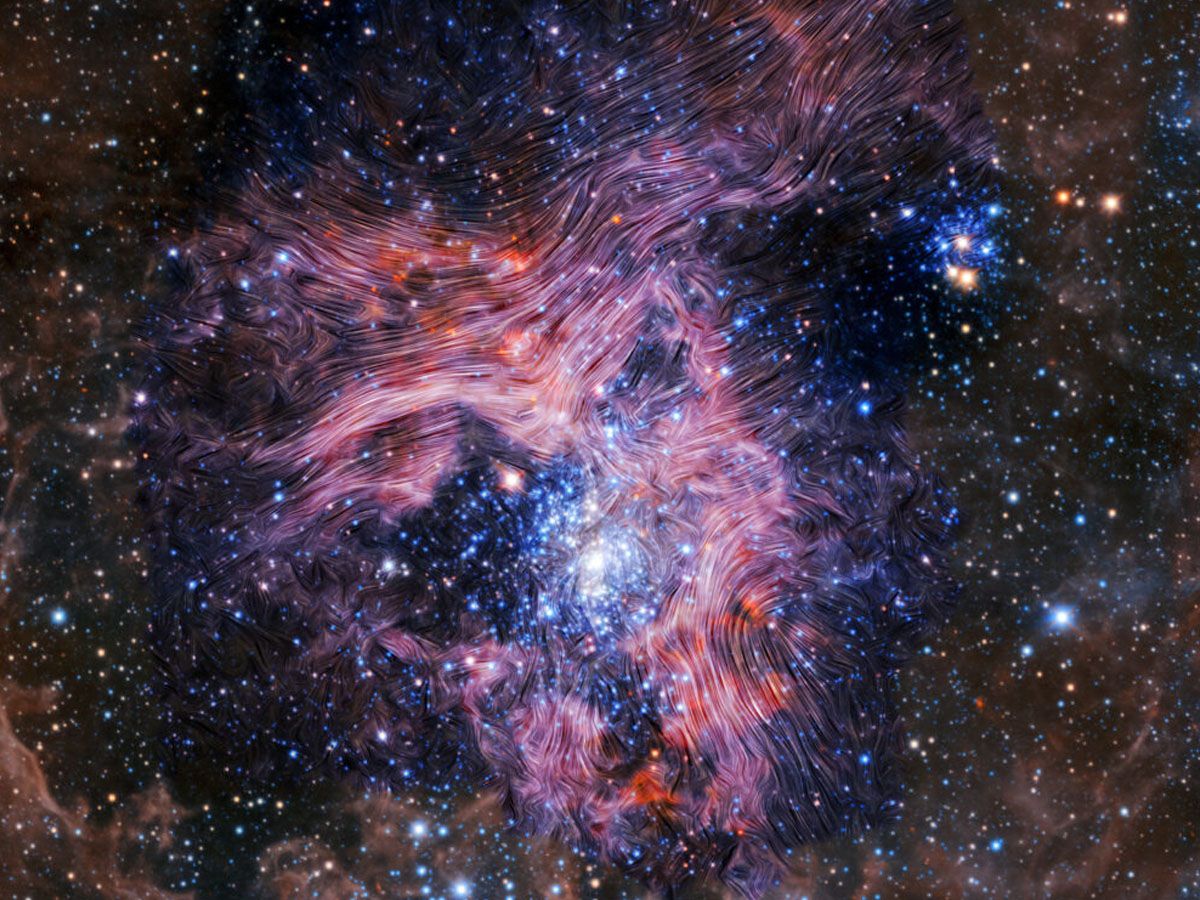Nestled 160,000 light-years away in the Large Magellanic Cloud, the Tarantula Nebula is a dazzling spectacle of star creation on a scale unimaginable. It shines brighter and spans larger than any other star-forming region in our Local Group of galaxies.
Our voyage today leads us into its intriguing depths, packed with massive young stars and expanding gas bubbles, and towards an enigma that puzzles scientists across the globe.
The Tarantula Nebula
So, why is the Tarantula Nebula such a standout feature in the Large Magellanic Cloud (LMC)? Well, it's got some star power to brag about!
Picture the most massive and radiant star formation region in your mind, and the Tarantula Nebula likely surpasses that. It reigns supreme as our Local Group of galaxies' most luminous and largest star-forming area.

That's a community of over 50 galaxies, including our Milky Way, the Andromeda galaxy, and the Triangulum galaxy, to name a few.
But the Tarantula Nebula isn't just impressive in size and brightness, it's a factory of stars. Thousands of stars are born here, contributing to its dazzling glow.
It's like the heart of the universe, continuously pumping out new stars to illuminate the cosmic expanse. But, with such intense star formation, the Nebula holds numerous secrets yet to be discovered.
R136: A Massive Star Cluster within The Tarantula Nebula
At the heart of the Tarantula Nebula lies a treasure trove of stars, a massive cluster known as R136. Imagine it as the bustling downtown of a cosmopolitan city, where the stars are as densely packed as skyscrapers.
The lifeblood of the Tarantula Nebula, R136 is a beehive of activity, home to tens of thousands of young and massive stars.
So, what makes R136 unique? Well, it's not just any ordinary star cluster. It's a starburst region, a place where stars form at an exceptionally high rate.

Think of it as a celestial fireworks display, where new stars are continually bursting into existence. This continuous stellar formation gives R136 its exceptional brightness, making it a central feature of the Tarantula Nebula.
But R136 isn't just about creating stars, it influences the Tarantula Nebula's very structure and dynamics.
This connection between a star cluster and its parent nebula is an intricate dance of cosmic forces, one that we're only just beginning to understand.
The Puzzling Dynamics of The Tarantula Nebula
As we delve deeper into the Tarantula Nebula, it's impossible to ignore its most distinctive feature: expanding gas bubbles. Imagine massive balloons growing in size, fueled by the energy output from the young stars in R136.
This dynamic environment of inflating bubbles provides a mesmerizing spectacle, adding another layer to Nebula's already complex character.
However, the Tarantula Nebula doesn't play by the rules we're familiar with. You'd think with all this intense stellar activity, the gas at the Nebula's core would be under immense pressure, right? Surprisingly, that's not the case.

Despite the energy radiating from the young stars, the gas remains unpressurized, much less than anticipated.
And that's not the only oddity. The core of the Tarantula Nebula, despite hosting such a dense cluster of stars, weighs less than expected.
The center of this nebulous web doesn't hold as much mass as we initially thought. These puzzling findings challenge our current understanding of star formation regions and hint at an underlying complexity yet to be explored.
Shedding Light on the Mystery: SOFIA's Contribution
In our quest to unravel the Tarantula Nebula's secrets, we have a high-flying ally, the Stratospheric Observatory For Infrared Astronomy, better known as SOFIA. But what exactly is SOFIA?
Picture a Boeing 747 jetliner, but it carries a massive infrared telescope instead of passengers. This airborne observatory flies high above most of Earth's atmosphere, allowing it to capture infrared images of the cosmos without the distortions caused by atmospheric conditions.
SOFIA's unique vantage point has enabled it to peer deep into the Tarantula Nebula, providing valuable insights into this complex region. SOFIA's observations have been instrumental in explaining the phenomena we observed earlier.
Remember the unpressurized gas and the lower-than-expected mass at the Nebula's core? SOFIA's data holds the answers to these conundrums.
Recently, a team of researchers published a paper based on these observations, bringing a new perspective to our understanding of the Nebula. Their findings open a new chapter in our cosmic storybook, leading us closer to unraveling Nebula's mysteries.
The Magnetic Influence on The Tarantula Nebula
The answer lies in a force that permeates the entire universe: magnetism. The Tarantula Nebula, despite its gargantuan size, isn't immune to the influence of magnetic fields.
These fields crisscross the nebula, weaving a complex network that holds the key to its unique characteristics.
In the Tarantula Nebula, magnetic fields play an unsung hero's role. They are crucial in keeping the nebula together and regulating the flow of gas.
Moreover, the strength of these magnetic fields isn't uniform. It varies across different regions of the Nebula. And these variations have a significant impact.

For instance, where the magnetic field is strong, star formation may be hindered, while stars can form more readily in areas where it's weaker.
Likewise, the formation of those spectacular expanding gas bubbles? That's also influenced by magnetic fields.
In regions where the magnetic field is strong, the gas bubbles' expansion can be suppressed, leading to a fascinating dynamic between the forces at play within the Nebula.
With these findings, it's clear that the invisible threads of magnetic fields govern the Tarantula Nebula's intricate dance, shaping its star formation and the behavior of its gas bubbles.
Understanding the 30 Doradus Region
The exploration of the Tarantula Nebula isn't just about understanding a single star-forming region. It's about unraveling the cosmic tapestry of an even larger entity, the Doradus region.
This region, also referred to as the Doradus Nebula, is a major part of the Large Magellanic Cloud and hosts the Tarantula Nebula, like a parent housing a vibrant child.

What happens in the Tarantula Nebula can provide insights into the larger, more complex dynamics of the Doradus region. Think of it as studying a puzzle piece to comprehend the whole picture.
In particular, a significant focus of future studies will be on the magnetic fields of the Large Magellanic Cloud. Remember how we saw the vital role of magnetic fields in shaping the Tarantula Nebula?
Well, that's just a small part of the story. To fully understand the Doradus region, we need to explore the magnetic fields' influence on a larger scale.
Sources: iop.org












